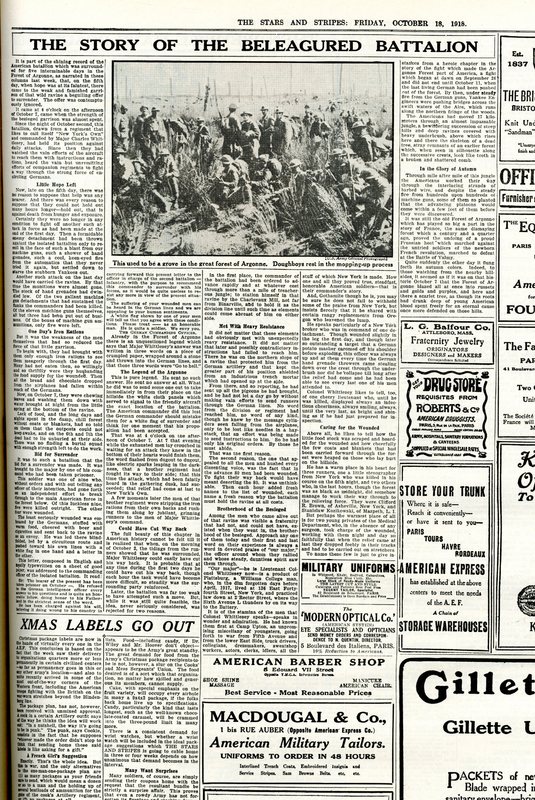Stars and Stripes is an American newspaper that reports on matters affecting the members of the United States Armed Forces. It operates from inside the Department of Defense, but is editorially separate from it.
During World War I, the staff, roving reporters, and illustrators of the Stars and Stripes were veteran reporters or young soldiers who would later become such in the post-war years. Harold Ross, editor of the Stars and Stripes, returned home to found The New Yorker magazine. Cyrus Baldridge, its art director and principal illustrator, became a major illustrator of books and magazines, as well as a writer, print maker and stage designer. Sports page editor Grantland Rice had a long career in journalism and founded a motion picture studio called Grantland Rice Sportlight.[4] Drama critic Alexander Woollcott's essays for Stars and Stripes were collected in his book, The Command Is Forward (1919).
The Stars and Stripes was then an eight-page weekly which reached a peak of 526,000 readers, relying on the improvisational efforts of its staff to get it printed in France and distributed to U.S. troops.
http://en.wikipedia.org/wiki/Stars_and_Stripes_(newspaper)
Two films about the newspaper are available for free download at the Internet Archive:
https://archive.org/details/gov.dod.dimoc.30125
and
https://archive.org/details/gov.archives.arc.2569909
Cover title
The official newspaper of The American Expeditionary Forces.""
Stars and Stripes is an American newspaper that reports on matters affecting the members of the United States Armed Forces. During World War I, the staff, roving reporters, and illustrators of the Stars and Stripes were veteran reporters or young soldiers who would later become such in the post-war years. Harold Ross, editor of the Stars and Stripes, returned home to found The New Yorker magazine. Cyrus Baldridge, its art director and principal illustrator, became a major illustrator of books and magazines, as well as a writer, print maker and stage designer. Sports page editor Grantland Rice had a long career in journalism and founded a motion picture studio called Grantland Rice Sportlight. Drama critic Alexander Woollcott's essays for Stars and Stripes were collected in his book, The Command Is Forward (1919). The Stars and Stripes was then an eight-page weekly which reached a peak of 526,000 readers, relying on the improvisational efforts of its staff to get it printed in France and distributed to U.S. troops.


